Early December 2017 (1st-10th)
/The first nor’easter of the winter season impacted coastal Virginia at the tail end of the period, and a number of interesting finds may have been related to the early arrival of wintry conditions to the coast. Top birds during this period in Virginia Beach included LECONTE’S SPARROW, BLACK-LEGGED KITTIWAKE, KING EIDER, ROSS’S GOOSE & WESTERN TANAGER, first-of-fall arrivals for American Woodcock (2 Dec) & Purple Sandpiper (3 Dec) and late reports for Semipalmated Plover (2 Dec) & Ruby-throated Hummingbird (10 Dec). WEATHER: Sunny skies dominated the first half of the period, being replaced by clouds in the latter half (even some wintry mix near the end). Average daily high temperatures this period dropped considerably, 7.0° from 59.8° F in late November to 52.8° (-3.1° from prior 10-year average), with average daily low temperatures rising slightly, 0.8° from 36.8° to 37.6° F (-1.6° from prior 10-year average). Overall, temperatures ranged from a minimum of 30° F (10 Dec) to a maximum of 66° (5 Dec). Precipitation this period amounted to 2.22”, spread across five days with measurable amounts, and a daily maximum of 1.23” (8 Dec). Maximum sustained winds at Oceana this period were 18 mph and gusts reached 24 mph (9 Dec). Sunrise/sunsets varied from 6:58 AM/4:47 PM (1 Dec) to 7:06 AM/4:47 PM (10 Dec), which means over all we lost 8 minutes of daylight during this period. Preliminary tide levels (referenced to MLLW) at the Sewell’s Point gauge (NOAA) in Norfolk varied from a minimum of -0.01 (5:18 AM, 7 Dec) to a maximum of 4.249 (1:42 PM, 9 Dec).
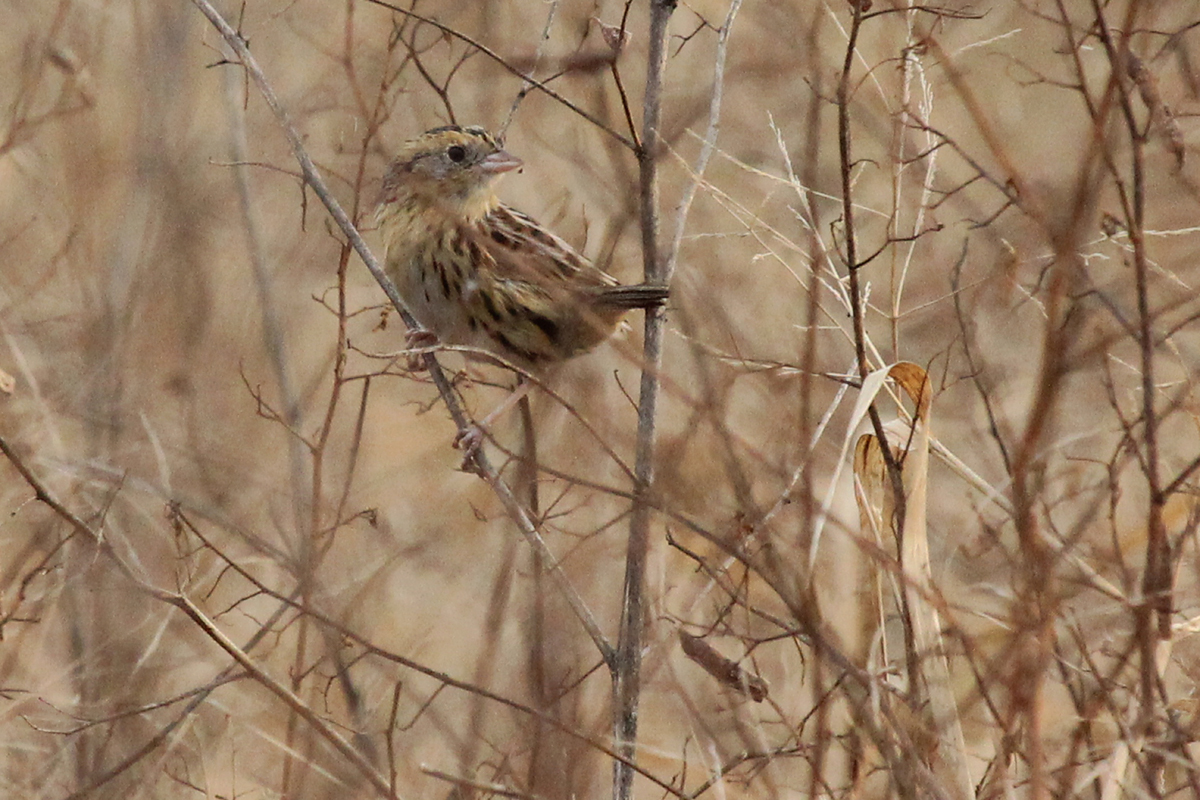
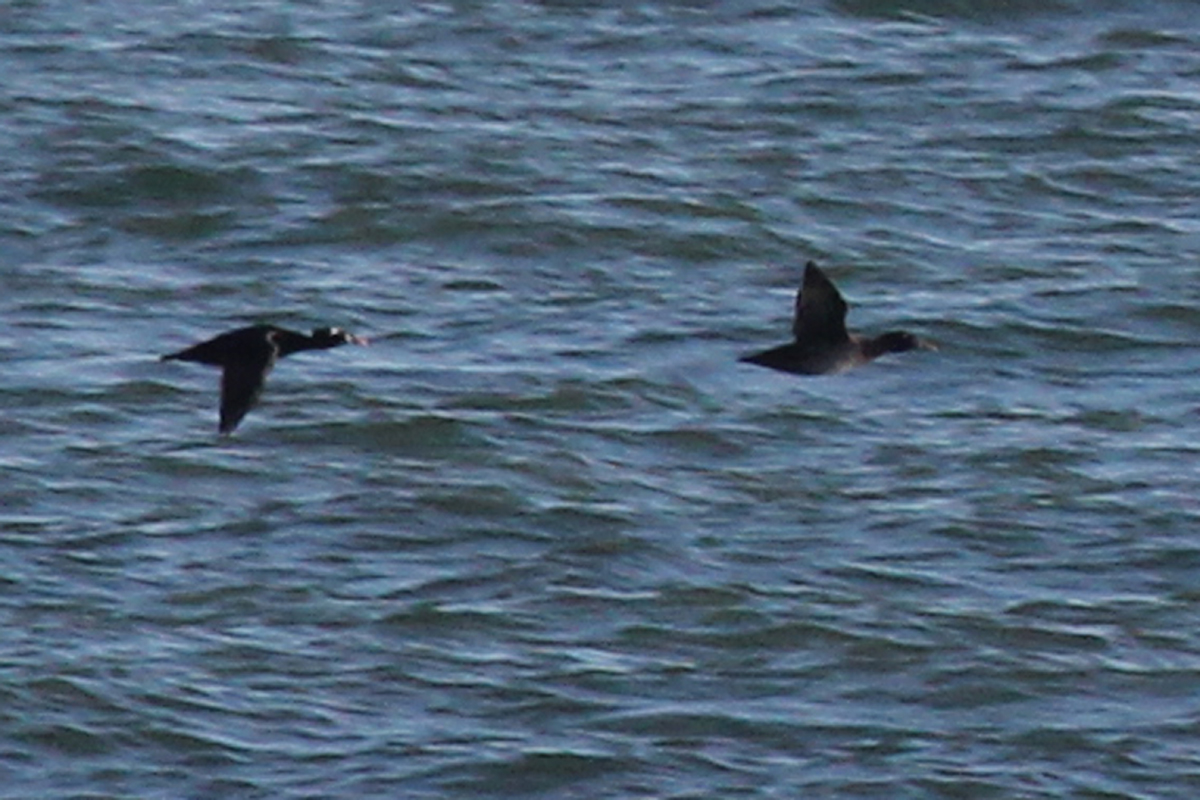
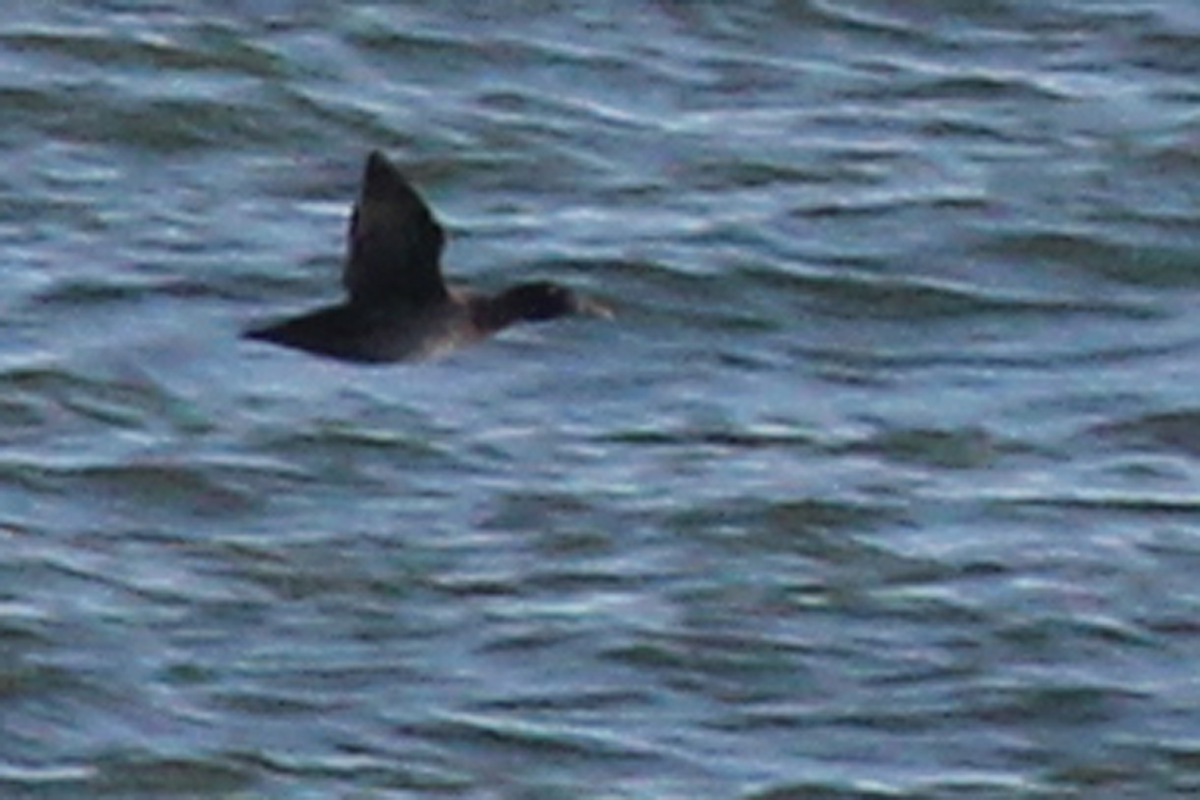
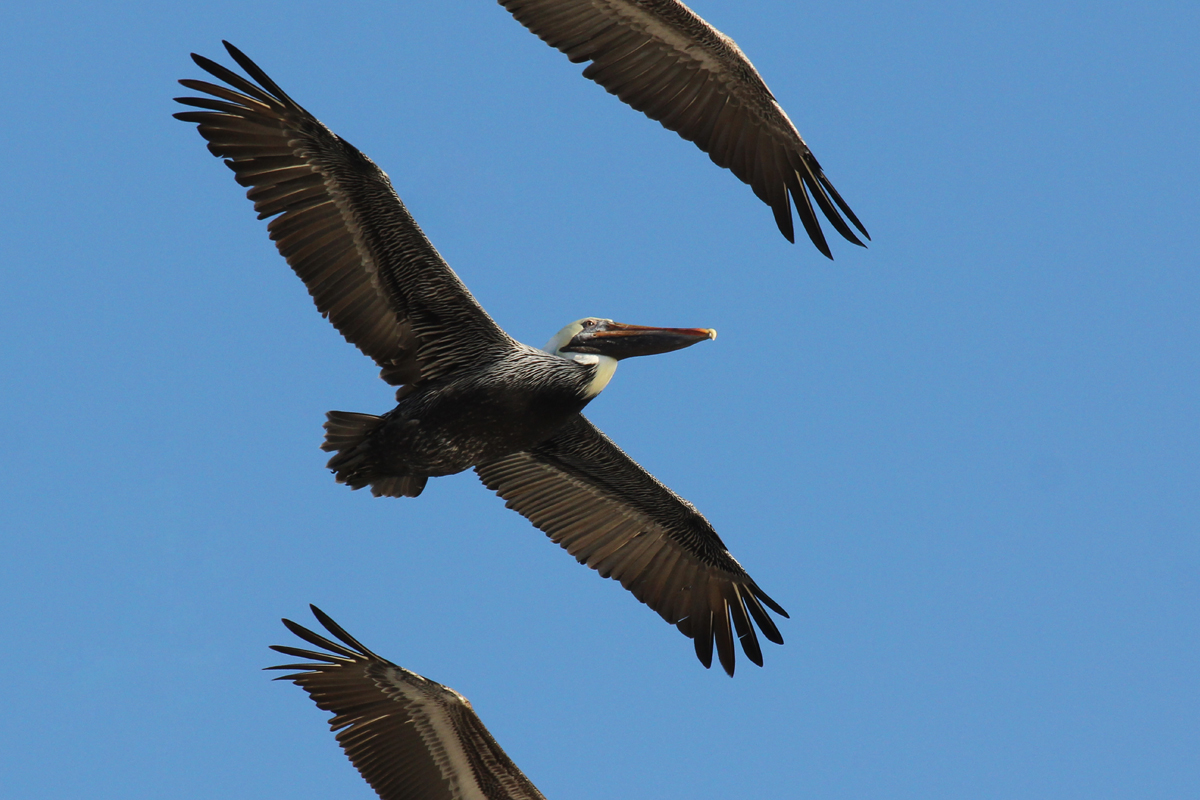
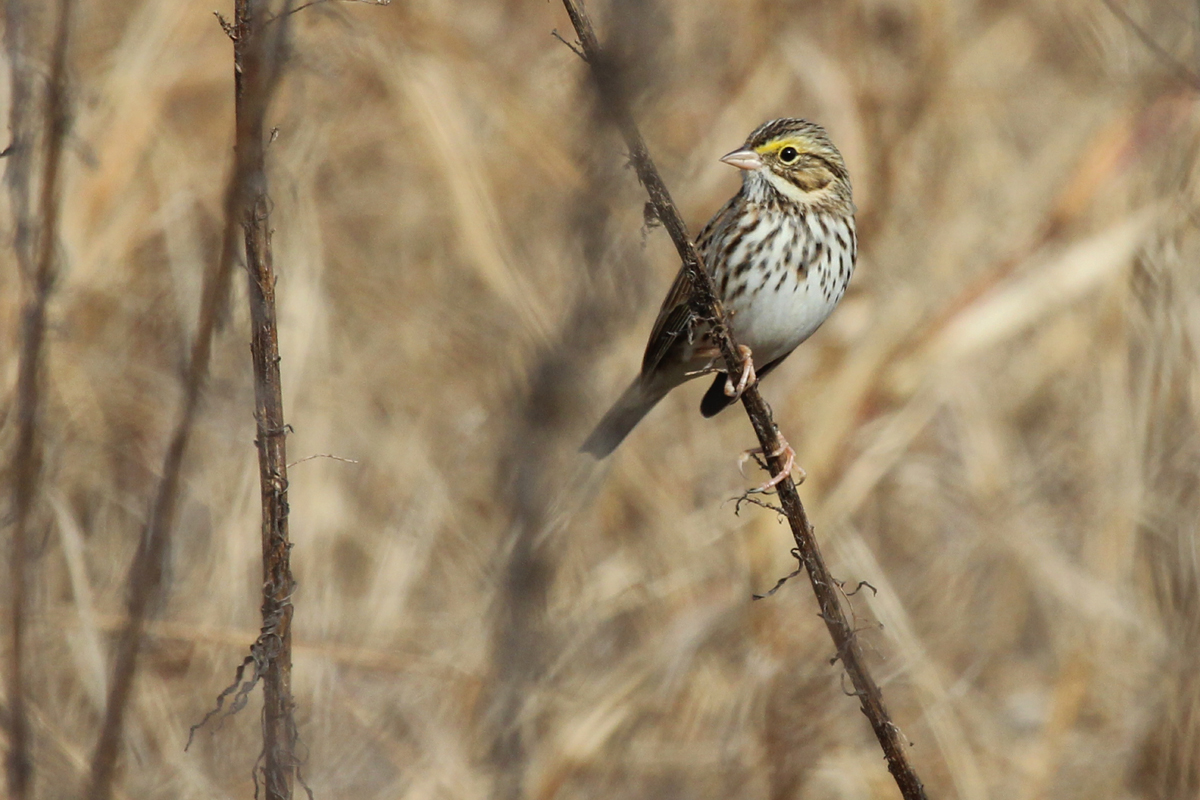
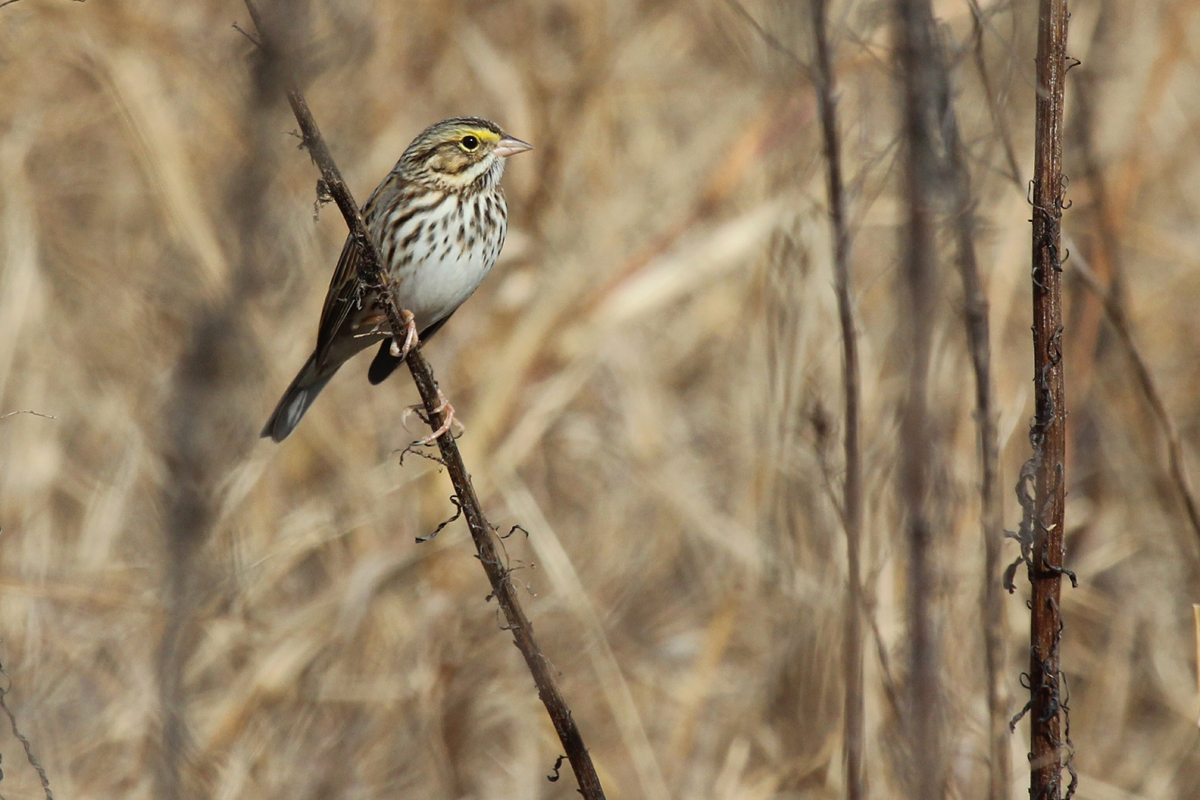
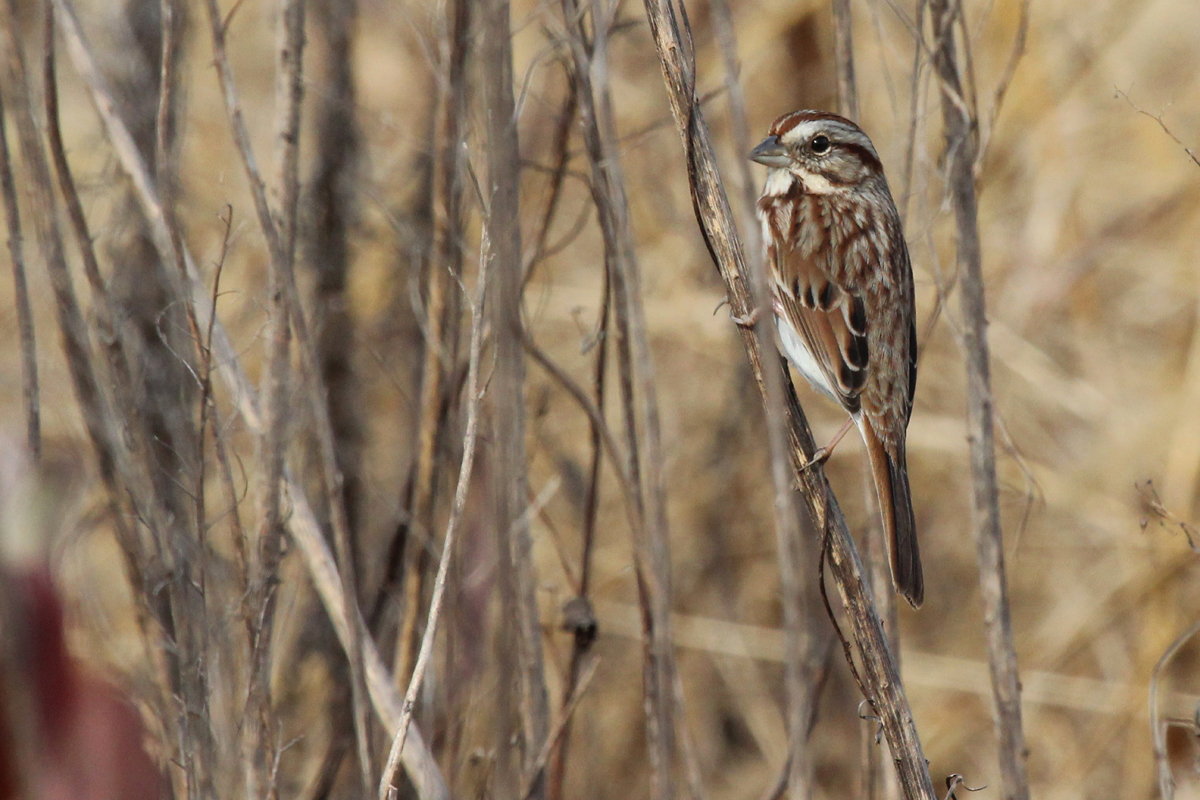

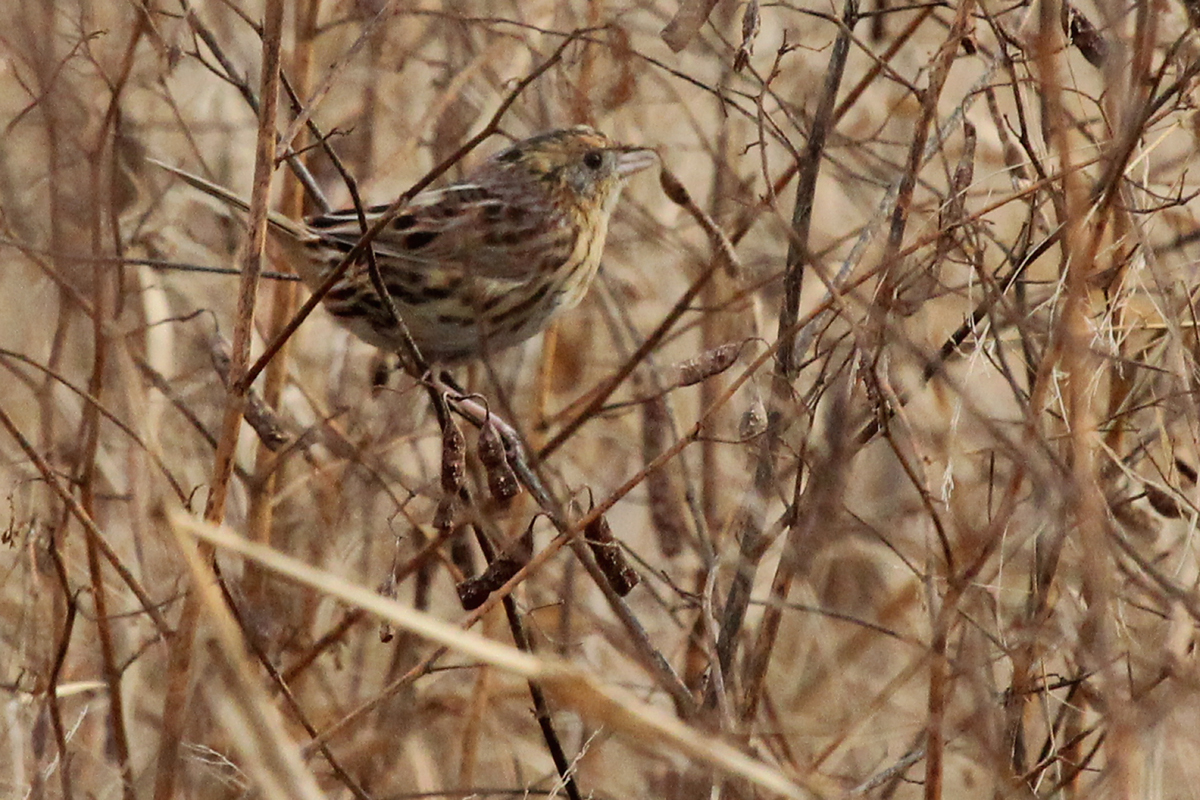
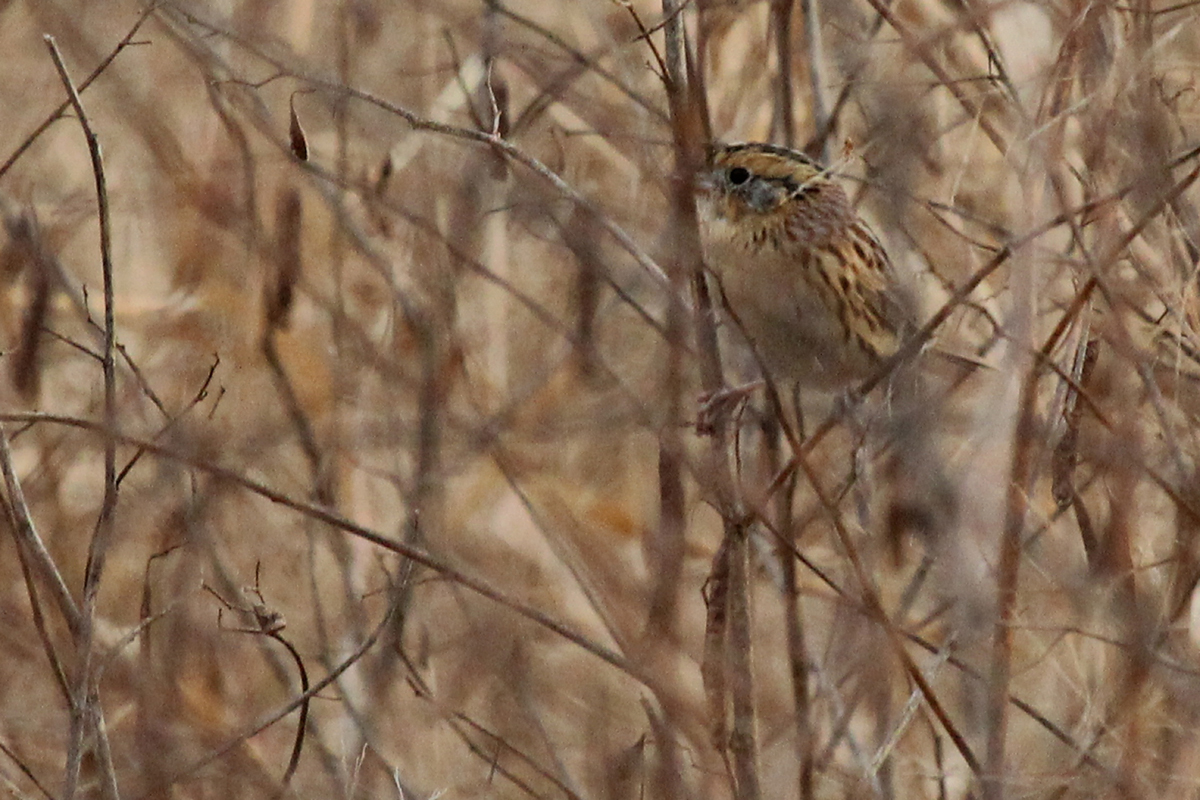
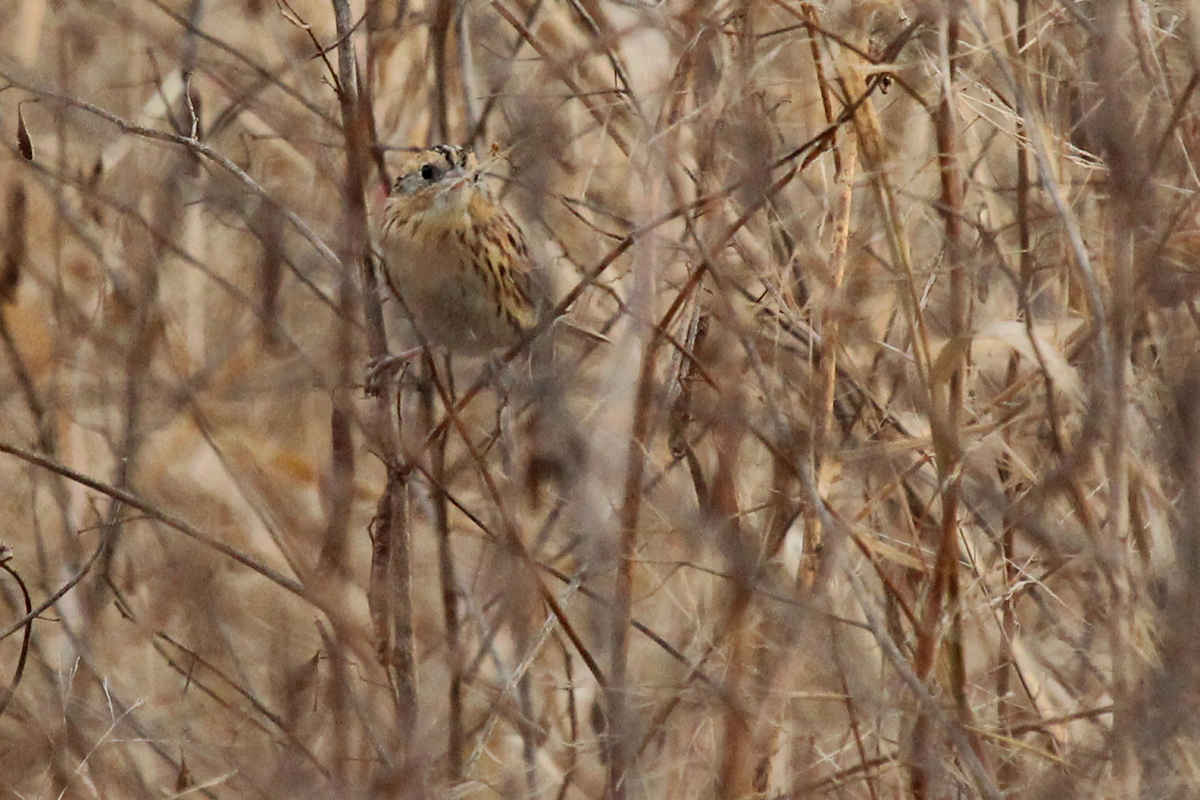
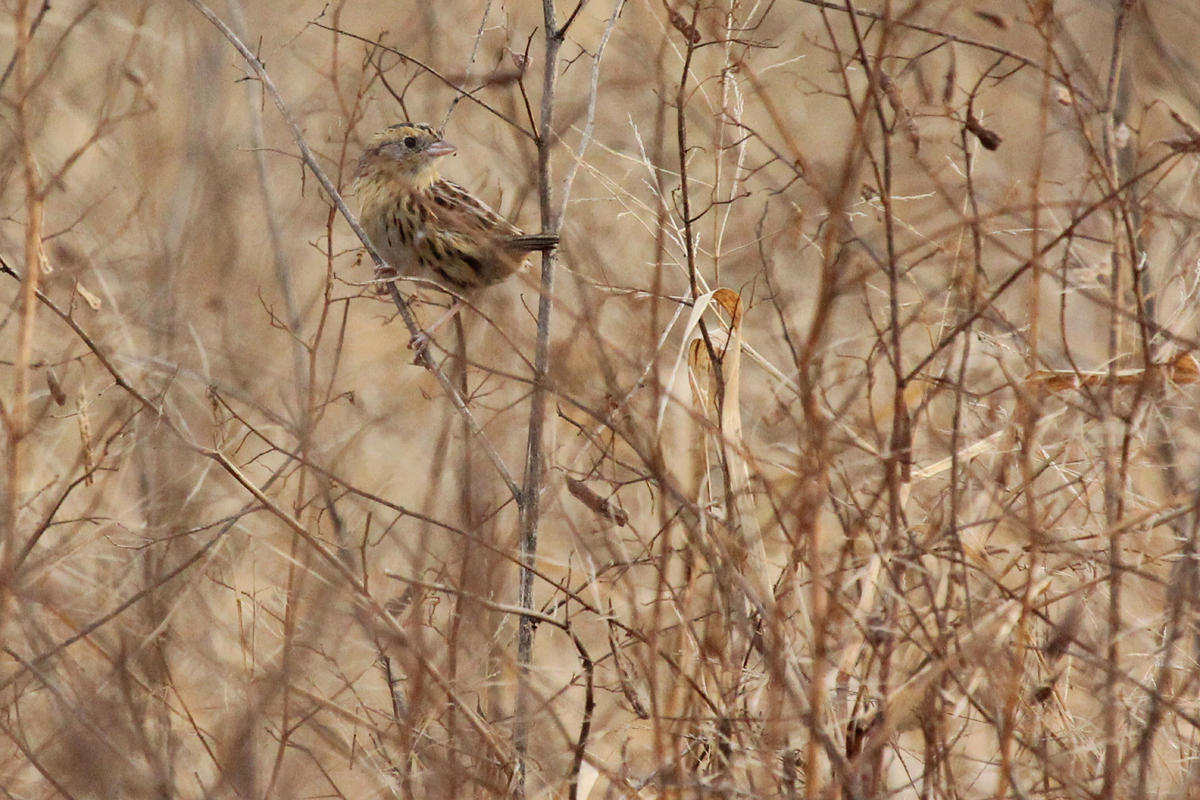
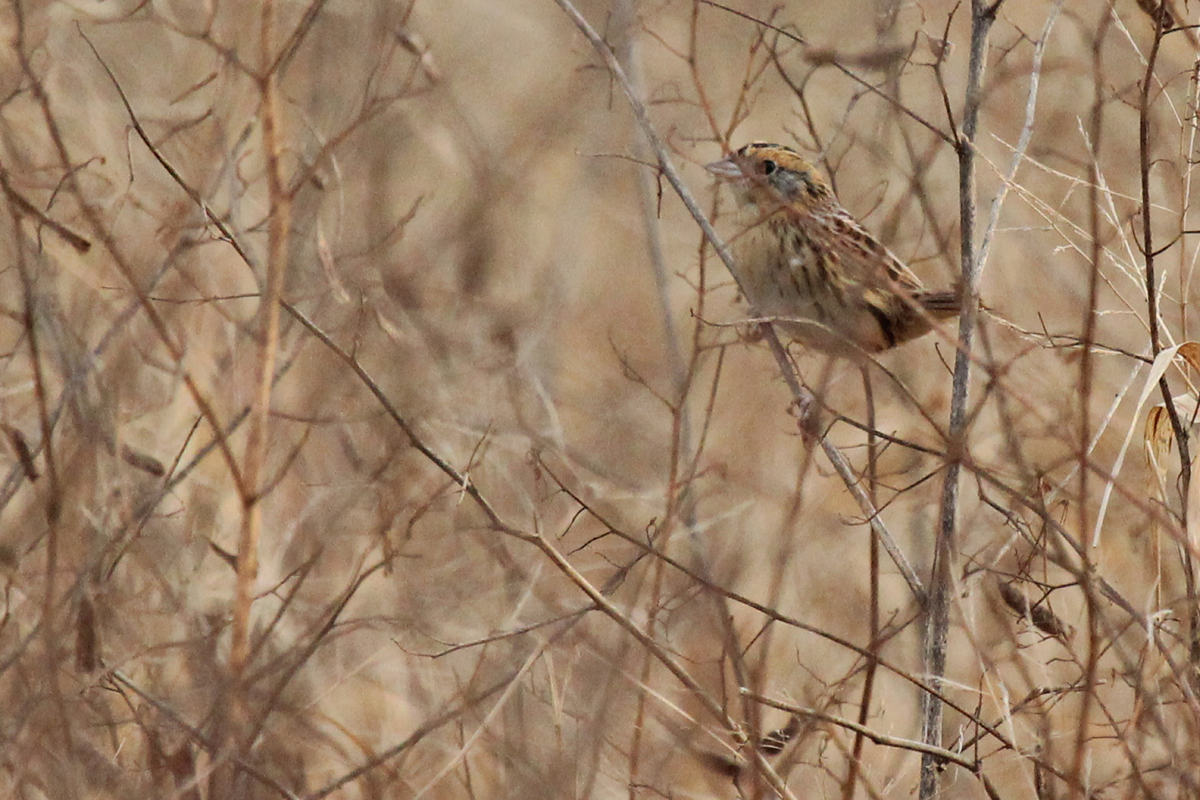

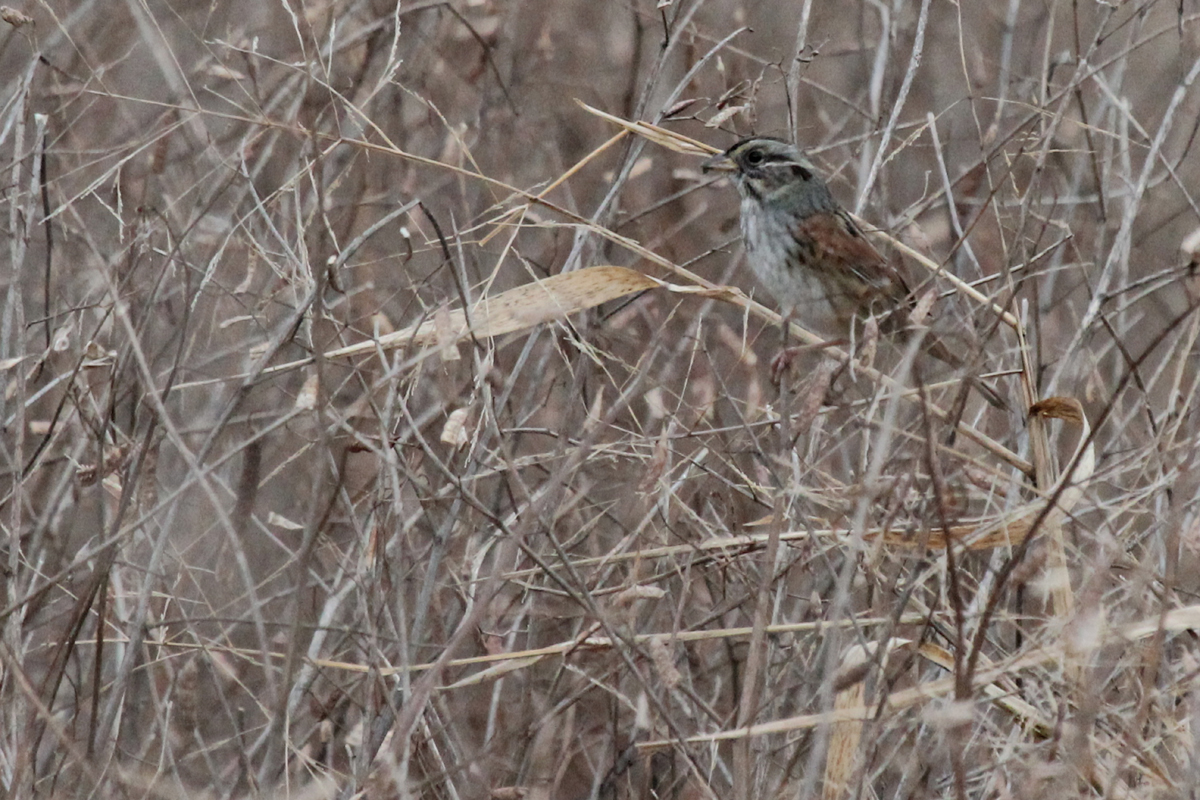
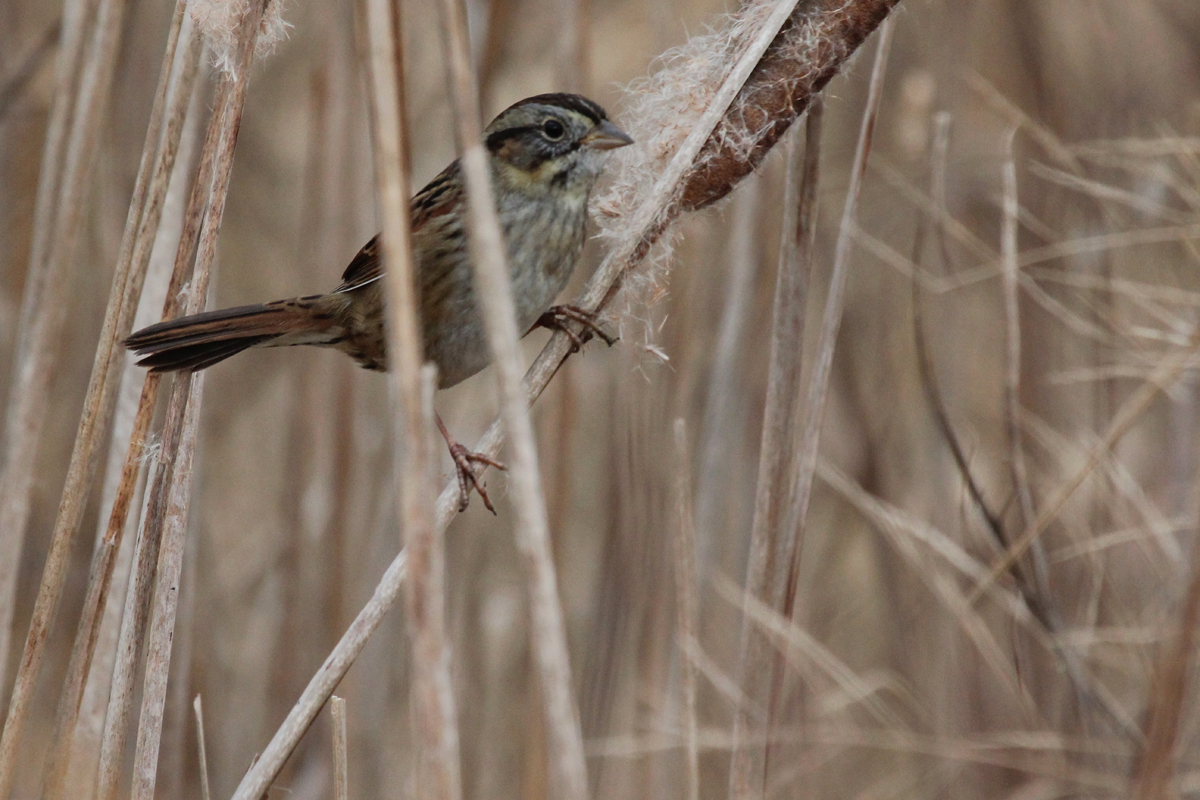
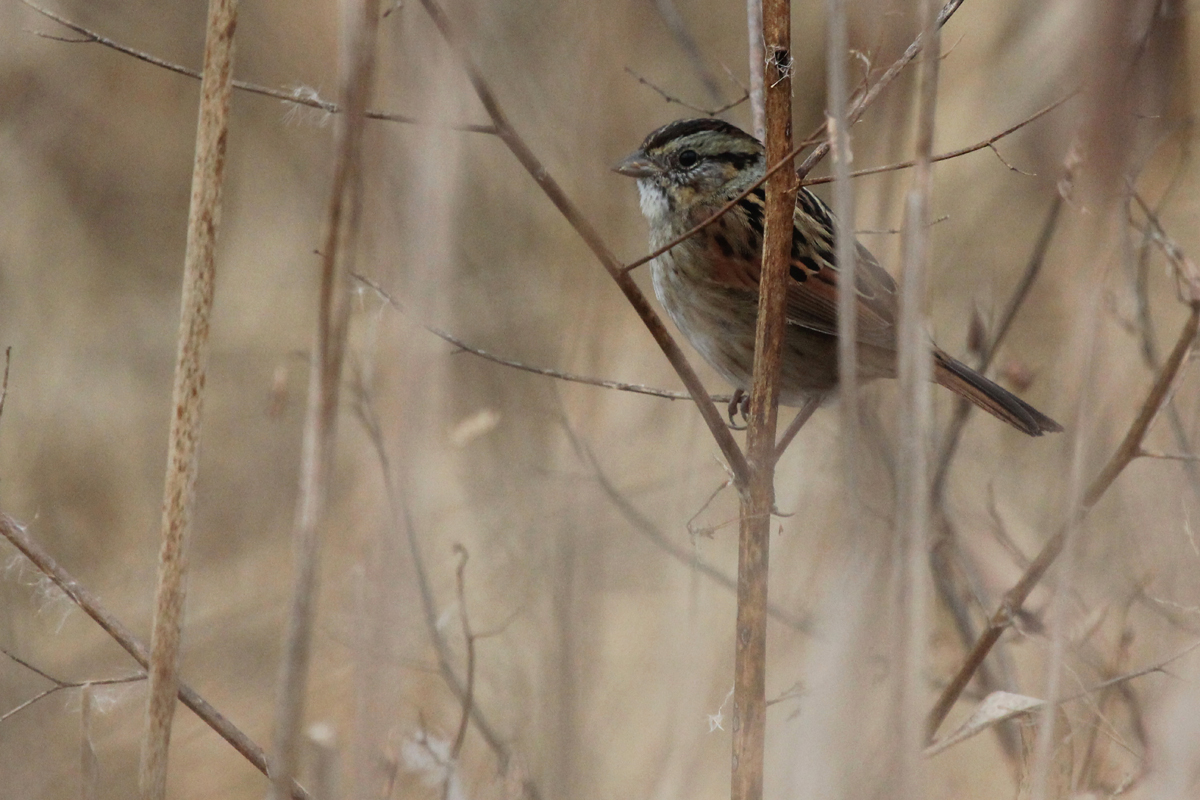
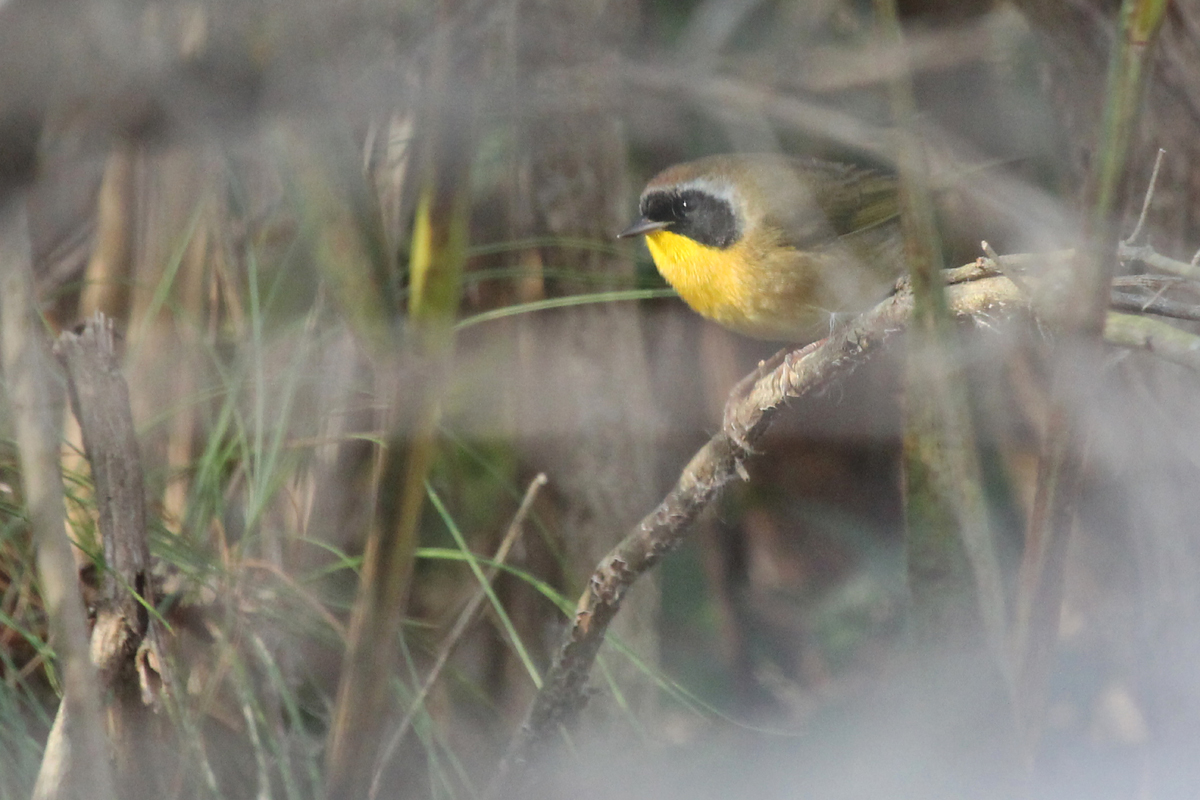
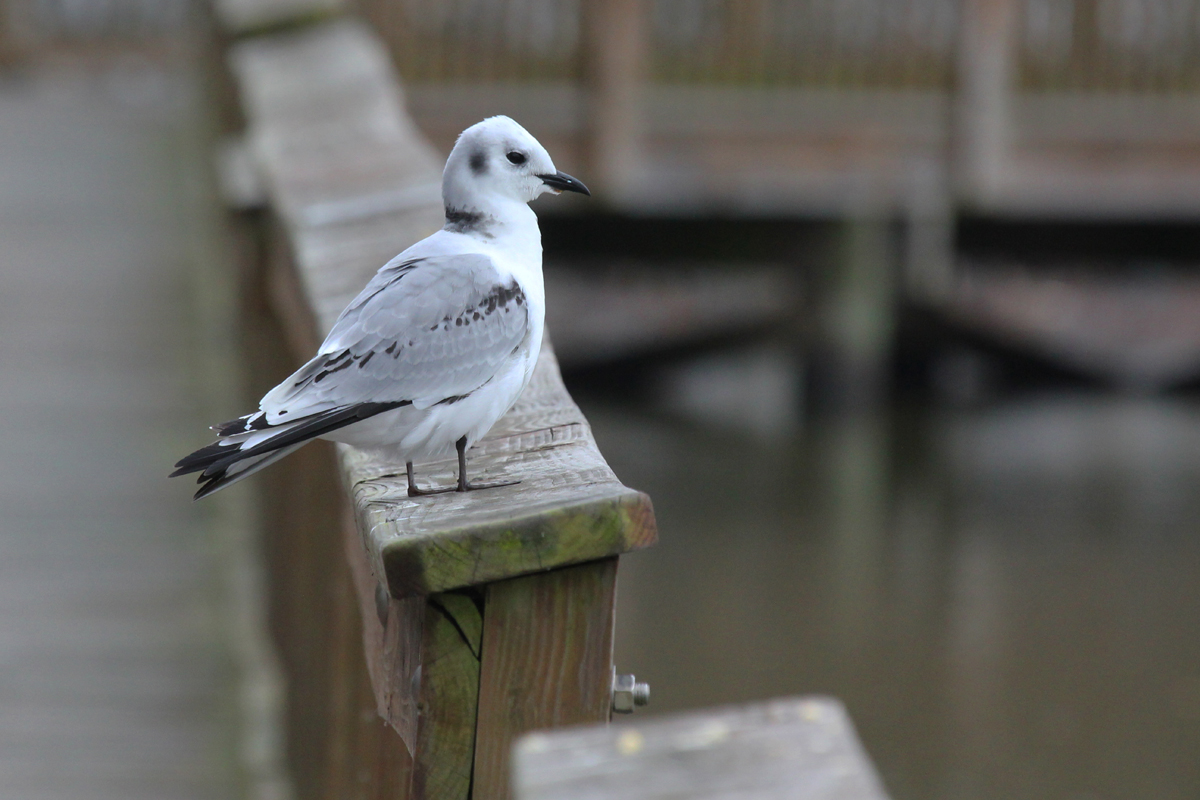
OBSERVATIONS: Part of the excitement in writing this journal over the years has been being able to compare what species are being found in any given period, with those species found in previous years during the same timeframe. Interestingly, and rather ironically, last year, a Le Conte’s Sparrow (the correct spelling at the time of the discovery) was found 4 Dec at Princess Anne WMA’s Beasley Tract (ph. Andrew Baldelli). Fast forward 364 days to 3 Dec 2017, and another LECONTE’S SPARROW (note the removal of the space per the AOS’s 2017 taxonomic update) was found in the same general area (ph. Andrew Baldelli & Rob Bielawski). This represents the second record for 2017 in Virginia Beach, with presumably the same individual that was found last December having been observed 9 Apr (ph. Andrew Baldelli & Rob Bielawski). It is a bit intriguing to think that perhaps this is yet again the same individual returning for the 2017-18 wintering season, but in all likelihood there could very well be more than one in this expansive habitat. The Beasley Tract has changed quite a bit over the last year, with this portion having been tilled up and planted with soy beans in the fall. Please Note: Princess Anne WMA is only open to birding on Sundays during the winter season, and a Virginia Department of Game & Inland Fisheries WMA access pass is required by anyone who wishes to attempt finding this bird. It was seen again the following Sunday, 10 Dec (obs. Tommy Maloney & Jason Schatti), so it seems to be staying put, at least for now.
A third record of 2017 for Virginia Beach, and a second for the fall/winter occurred when an immature BLACK-LEGGED KITTIWAKE was found near the Stumpy Lake Pier (corner of Elbow & Indian River Roads) on 4 Dec (ph. Jonathan Snyder). This individual, which has a noticeable growth on the underside of the lower mandible (see Mary Catherine Miguez’s up close photograph), persisted in the area throughout the remainder of the period, and was reported an incredible 26 times to eBird between the initial find and the end of the day on 10 Dec (ph. Timothy Barry)! About half of the observers have been placing the eBird pins at the Stumpy Lake Natural Area hotspot which sits a mile or so to the north of where the bird has actually been observed. For those hoping to view this bird, make sure to find your way to the Stumpy Lake Pier, rather than to the golf course / natural area / causeway portion of the lake. (Note that it has not yet been observed 11 Dec, as I’m writing this journal entry). Prior to this individual, another immature passed offshore by Back Bay NWR on 5 Nov (obs. David Clark & ph. Keith Roberts), and one was observed during the height of the alcid movement from the Oceanfront on 9 Feb (obs. Todd Day). What makes this current record particularly interesting, is that it was found, and has continued on an inland lake. So far, eBird shows no other inland records for this normally pelagic species, and even records along the immediate coastline are few and far between except during strong onshore gales or following tropical cyclones / nor’easters. In the days preceding the first observation, we experienced none of these weather patterns, so there is no telling what caused the individual to decide a freshwater reservoir like Stumpy Lake would suit its needs.
Another species that produced a third 2017 record during early December at Back Bay NWR on 2 Dec, when a subadult KING EIDER was observed flying south with a group of Surf Scoters (ph. Andrew Baldelli & Rob Bielawski). Additionally, that same morning, a total of 14 Common Eiders were observed moving southbound along the coast, so it might prove lucrative to continue seawatching in the early morning hours (maybe someone will snag the first Harlequin Duck of the winter season). Thus far, the only other King Eider report, was that of three photographed in a flock of Red-breasted Mergansers at Little Island Park on 20 Nov (ph. Joe Minor). Prior to that, only a single individual persisted around the Chesapeake Bay Bridge-Tunnel from late December into late February (original obs. Edward Brinkley). It is possible that with good numbers of both eider species already this winter, perhaps we’ll see more Kings settling along our coast. It would be wonderful to finally see an adult male here, but seeing any plumage of this species is cause for celebration regardless.
Though the ROSS’S GOOSE that was found at Kempsville Lake in late November was last reported in that same period, another individual was found along Independence Boulevard near Sentara Hospital on 3 Dec (ph. Kathy Spencer). With an individual present through the 2016-17 winter months on Sherwood Lakes through at least 23 Feb, an individual found in this same general area in early & late November, and the Kempsville Lake individual, this represent a fourth record for Virginia Beach in 2017, likely amounting to four different birds. Most of the time, Ross’s Geese have been found in large flocks of geese (Canadas and Snows) in southern Virginia Beach, so these last two records are a bit perplexing given they’ve occurred in very small flocks (say, under 100 birds), and they’ve occurred in suburban/urbanized parts of the city. The Sentara bird has not been reported again though, and it seems the best chance for observers to view this species is still to scan through the winter goose flock that forages around Sherwood Lakes and off of Firefall Drive near Ocean Lakes High School.
Likely the same individual that wintered in the Alanton Neighborhood of Virginia Beach during 2016-17, a WESTERN TANAGER was again reported 1 & 10 Dec (obs. Michelle Payne). This represents the second and third records from this private residence so far, with the first report occurring 3 Nov. Western Tanagers have been more frequent on the coast in recent years, with most records being those of female-plumaged individuals. An adult male has returned each year since 2009 to a feeder in James City County (an hour or so northwest of Virginia Beach). Also, a male was photographed at Back Bay NWR on 11 May 2016 (ph. Michelle Payne). So far in 2017, there was at least one other wintering bird being seen from 11 Feb-10 Mar (obs. Michele Sorenson), as well as individual in a Lago Mar backyard on 30 Sep (ph. Mary Catherine Miguez), and a final individual at Camp Pendleton SMR on 21 Oct (ph. Karen & Tom Beatty). This makes this a fifth Virginia Beach record, though potentially only the 4th individual bird (if it is indeed a returning winterer).
During early December, we had a pair of first-of-season arrivals, both within the expected timeframe for the species, though a bit later than normal probably due to lack of effort in attempting to find them. First off, several American Woodcocks were present near the Lotus Gardens off Sandbridge Road on 2 Dec (obs. Andrew Baldelli). This site was a reliable location to hear them in the pre-dawn hours during January as well, and their courtship displays can be visible in the first few minutes of light before the birds become inactive for the daylight hours. Last period, we added the first Great Cormorant for the winter, and it was mentioned that this species has likely just been missed since the Chesapeake Bay Bridge-Tunnel complex is now closed to the public. Due to the same issue, the first Purple Sandpiper of the season was finally observed at Rudee Inlet on 3 Dec (obs. Phil Kenny). This species is very common around the man-made islands of the CBBT, but is pretty uncommon away from that localized region of the city. Occasionally, some end up on the rock groins protecting Fort Story, and on the armored shorelines around Rudee Inlet, the likely location for most birders to now find them until the CBBT opens back up (hopefully in five years?). In addition to the two first-of-season finds, there was also a pair of late season finds, specifically for a single Semipalmated Plover found on the beach at Back Bay NWR on 2 Dec (obs. Andrew Baldelli & Rob Bielawski), and a Ruby-throated Hummingbird visiting the same feeder setup in Alanton that has attracted the Western Tanager mentioned above, on 10 Dec (obs. Michelle Payne).
SPECIES DOCUMENTED BY MEDIA and submitted to eBird for Virginia Beach during this period included: 1 DEC – Black-bellied Plover, Dunlin, Ring-billed Gull, Herring Gull, Great Black-backed Gull, Black Skimmer & Boat-tailed Grackle (Pleasure House Point NA / Candice Lowther); Brown Pelican & Boat-tailed Grackle (Little Island Park / Chris White). 2 DEC - KING EIDER & Brown Pelican (Back Bay NWR / Rob Bielawski); Northern Shoveler, Gadwall, Hooded Merganser, Pied-billed Grebe, Double-crested Cormorant, Great Blue Heron, Red-bellied Woodpecker, Yellow-bellied Sapsucker, Blue-headed Vireo & Ruby-crowned Kinglet (Stumpy Lake NA / Eric Alton); Orange-crowned Warbler (Back Bay NWR / David Clark); Snow Goose (Princess Anne Rd. / Eric Alton); Snow Goose, Lesser Scaup, Cattle Egret, Killdeer & Eastern Meadowlark (Sherwood Lakes / Eric Alton); Ring-necked Duck, Black Scoter, Red-throated Loon, White Ibis, Brown-headed Nuthatch & Chipping Sparrow (Dam Neck NA / Karen & Tom Beatty); Bufflehead, Hooded Merganser & Osprey (Pleasure House Point NA / Laura Mae); Northern Shoveler, Mallard, Double-crested Cormorant, Great Blue Heron & Song Sparrow (Stumpy Lake NA / Jonathan Snyder); Savannah Sparrow & Song Sparrow (Big Sky Farms / Rob Bielawski). 3 DEC – Common Yellowthroat, LECONTE’S SPARROW, Savannah Sparrow (Savannah) & Swamp Sparrow (Princess Anne WMA Beasley Tract / Rob Bielawski); Ring-billed Gull & Lesser Black-backed Gull (Comfort Suites Hotel / Phil Kenny); Tundra Swan & Swamp Sparrow (Back Bay NWR / Chris White); Tundra Swan, Great Egret, White Ibis & Savannah Sparrow (Back Bay NWR / Kathy Louthan); Yellow-rumped Warbler & Red-winged Blackbird (Back Bay NWR / Laura Mae); Osprey & Song Sparrow (Pleasure House Point NA / David Clark); Black-bellied Plover (Back Bay NWR / Philip Mitchell); American Kestrel & Yellow-rumped Warbler (False Cape SP / Laura Mae); White Ibis, Turkey Vulture & LECONTE’S SPARROW (Princess Anne WMA Beasley Tract / Phil Kenny); LECONTE’S SPARROW, Savannah Sparrow & Swamp Sparrow (Princess Anne WMA Beasley Tract / Karen & Tom Beatty); LECONTE’S SPARROW (Princess Anne WMA Beasley Tract / Mike Collins); Tundra Swan, Ruddy Duck & Savannah Sparrow (Back Bay NWR / Laura Mae); Canada Goose, Tundra Swan & Great Egret (Back Bay NWR / Candice Lowther); Brown Pelican & Boat-tailed Grackle (Little Island Park / Candice Lowther); ROSS’S GOOSE (Sentara Independence / Kathy Spencer); Tundra Swan & Swamp Sparrow (Back Bay NWR / Chris White). 4 DEC – Northern Shoveler, Gadwall, Mallard, Double-crested Cormorant, Great Blue Heron & BLACK-LEGGED KITTIWAKE (Stumpy Lake NA / Jonathan Snyder); Belted Kingfisher (Pleasure House Point NA / Lee Seibert). 5 DEC – Hooded Merganser, Double-crested Cormorant & Great Blue Heron (Stumpy Lake NA / Karen & Tom Beatty); BLACK-LEGGED KITTIWAKE (Stumpy Lake Pier / Mike Collins); Bald Eagle & BLACK-LEGGED KITTIWAKE (Stumpy Lake Pier / Karen & Tom Beatty); Bald Eagle & BLACK-LEGGED KITTIWAKE (Stumpy Lake Pier / Mary Catherine Miguez); BLACK-LEGGED KITTIWAKE (Stumpy Lake Pier / Rob Bielawski). 6 DEC – BLACK-LEGGED KITTIWAKE (Stumpy Lake Pier / Jonathan Snyder). 7 DEC – Wood Duck, Northern Shoveler, Gadwall, Green-winged Teal, Pied-billed Grebe, Double-crested Cormorant, Great Blue Heron & BLACK-LEGGED KITTIWAKE (Stumpy Lake NA / Eric Alton); BLACK-LEGGED KITTIWAKE (Stumpy Lake NA / Jonathan Snyder); Double-crested Cormorant & BLACK-LEGGED KITTIWAKE (Stumpy Lake NA / Steve Myers); BLACK-LEGGED KITTIWAKE (Stumpy Lake Pier / Pamela Monahan); BLACK-LEGGED KITTIWAKE (Stumpy Lake Pier / Andrew Baldelli); BLACK-LEGGED KITTIWAKE (Stumpy Lake Pier / Loretta Silvia); BLACK-LEGGED KITTIWAKE (Stumpy Lake Pier / David Clark); Double-crested Cormorant (Stumpy Lake NA / Loretta Silvia); BLACK-LEGGED KITTIWAKE (Stumpy Lake Pier / Tommy Maloney); BLACK-LEGGED KITTIWAKE (Stumpy Lake Pier / Bert Harris). 10 DEC – Cattle Egret (Princess Anne Rd. / David Clark); BLACK-LEGGED KITTIWAKE (Stumpy Lake NA / Timothy Barry).
LOOKAHEAD: Early December started off the winter season with quite a bang, and hopefully the great sightings continue to pour in as we enter mid-month. As with the earlier part of the month, the remainder of December is typically known for rare wintering species being found around the city, and if last year is an indicator, it would behoove birders to spend time sifting through sparrows, blackbirds, and geese flocks for unusual species. Last December, in what may have been a milder early winter, there was several occurrences of warblers that don't annually winter here, including: Northern Parula, Cape May Warbler, Prairie Warbler, Black-and-white Warbler & Yellow-breasted Chat (though this one is no longer considered a warbler species). As we head towards Christmas Bird Count season, it'll be interesting to see if any species other than our five annually-wintering warblers (Common Yellowthroat, Pine Warbler, Yellow-rumped Warbler, Palm Warbler & Orange-crowned Warbler) get reported. Seawatching can also yield unusual birds like we’ve already seen with both King & Common Eiders observed multiple times. Lastly, regularly occurring (used synonymous with annually-occurring here) species that have not been observed yet this fall include Redhead (15 Oct), Harlequin Duck (25 Oct), and Canvasback & Common Goldeneye (10 Nov). As always, make sure to report your finds to eBird so the data can be used to adjust the expected arrival dates and to view the full listing of each species’ “average expected arrival dates”!
Next Entry | Entry Index | Previous Entry | Same Period Last Year
For further information regarding this thrice-monthly, online publication, please visit the Journal Overview Page which provides an in-depth explanation of the format, layout and composition of the journal. As always, thank you for reading, and please leave me a comment below (you may use your Facebook, Gmail or other accounts to easily do so), or just click the Heart icon to the lower right of this post to let me know you stopped in!